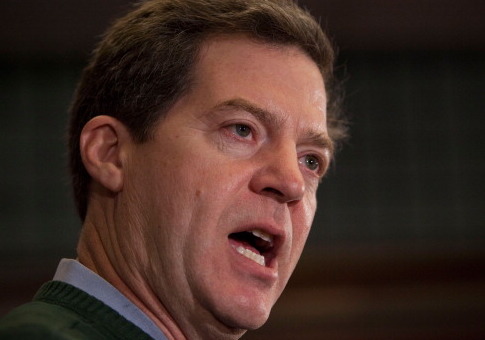Welfare reform implemented in Kansas caused individuals to reenter the labor force while earning higher incomes, according to a report from the Foundation for Government Accountability.
Kansas Republican Gov. Sam Brownback took office in 2011 and began to implement welfare reform after the previous governor, Kathleen Sebelius, had relaxed requirements for those on welfare to work or search for employment.
From 2000 to 2011, the number of able-bodied adults on cash welfare was increasing by 42 percent in Kansas, while nationally the number on welfare had dropped by a third.
Brownback first began reforming welfare by strengthening sanctions for those who received cash assistance by implementing a three-month ban on those who refused to meet work requirements. If an individual failed to meet the requirement for a second or third time, the ban was prolonged for six months to a year.
"Since these reforms took effect, compliance with work requirements has climbed from historic lows," the report states. "The percentage of able-bodied adults on the program who are employed has also risen. Meanwhile, the opposite trends were occurring both nationally and in the region with fewer able-bodied adults on welfare working."
Brownback also began collecting employment and wage data on 17,000 individuals who had left the Temporary Assistance for Needy Families (TANF) program for a duration of four years to see if these individuals became self-sufficient.
The study found that those who left welfare saw their earnings increase by 104 percent in one year, which is $20 million more than they had while on welfare. In four years, these individuals saw their incomes increase by 247 percent.
Individuals who left welfare are also better off because they found employment in more than 600 different industries and found long-term, high-paying jobs.
"Critics of work requirements frequently suggest that enrollees who leave welfare are only able to find low-wage, entry-level employment," the report states. "Able-bodied adults removed from TANF found employment in more than 600 different industries, ranging from health care to finance to information technology. Even better, those who did find initial employment in entry-level jobs—such as those in food service, retail, or temp agencies—quickly found longer-term, higher-paying jobs."
Finally, the report finds that enrollment in the TANF program has begun to decline again. Since Brownback took office in 2011, participation in the program has declined by 78 percent, while nationally enrollment has declined by only 14 percent.
"FGA's past research has shown that the best way to free able-bodied, childless adults from the welfare trap is to get them back to work—the results of this study clearly indicate that the same is true for non-disabled parents," said Jonathan Ingram, vice president for research at the organization. "When able-bodied adults regain their independence, whether they have children or not, their incomes skyrocket and they're able to lift themselves out of government dependence. That's the power of work."
"The results of this study speak for themselves: Working Kansans are earning more and are better off than they were when they were dependent on government benefits," he said. "As policymakers consider the best path forward for helping millions of Americans regain their independence, the Kansas experience cannot be ignored."
